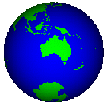
In 1931 Arhhem Land became an Aboriginal Reserve, (one of many) which is the homeland of the Aboriginal's where the "Dream-time" lives in their beliefs of Aboriginal Folklore which is mainly portrayed through song and dance.

Australia Day as we know, commemorates the beginning of European settlement when Governor Phillip landed at Sydney Cove on 26th January 1788. The day was first proclaimed a public holiday in 1838, the fiftieth anniversary of the founding, but some form of celebration had been held in Sydney as early as 1818. In this year of 1818 Governor Lachlan Macquarie became the first to celebrate 30 years of settlement on 26th January, when he ordered a 30 gun salute, for what was then called "Anniversary Day". His wife Elizabeth held a dinner and ball for the occasion. They had been reluctant to celebrate the date before, as it was also the date of the coup against Governor Bligh in 1808.
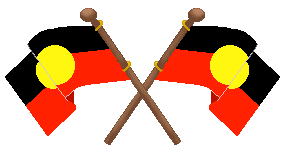
Australia was the first country in the world to have introduced a new system of bank notes based on plastic (polymer), which helps in the security of fighting counterfeiting and lasts four times as long as conventional paper notes. Footnote: I can vouch for last as a few times too many have washed them! *lol*

Australia is the strangest continent on earth. Australia has more unique animals than Europe and North America combined. They survive on a continent that is the driest and harshest of all the lands on earth. One hundred million years ago a land mass broke away from the rest and drifted southwards with all the unique animals and rainforests of the world, all this found only in Australia. Today you can still see what Australia was like all those years ago before she broke away by taking a trip to Tasmania that hasn't changed much since the break. The rainforest still exists on the Eastern Side of Australia where here does get ample rain to support these forests. Head down south from here and in the winter it snows in places up to thirty metres deep and includes blizzards, many Australian Marsupial's survive here including the wombat. These animals are normally nocturnal but during the snow months they have to eat during the day and sleep at night another indication as how these unique animals have survived this harsh unforgiving land. The lush Rainforests that are full of exotic bird life and animals including the striped possum and sugar glider possums. Then the rainforests peter out to scrub to create space for our other unique animals which include kangaroos and emus. These need space as they can outrun a horse and it wouldn't be wise to have to crash through the dense rainforest now would it? The Australian bush can be a very dangerous place to these animals (humans as well) as the bush when it is tender dry, is full of oils in its bark and leaves. If lightning (or some idiot moron with a match) strikes this, the trees burst into flame. We lose many of our unique wildlife through these fires but they always bounce back eventually. The burnt out bush is something to see when weeks even days later new green growth bursts and sparkles in the sunshine as the bush has learnt how to survive bushfires. This brings back the animals that had fled when the fire first broke. There are humane animal rescue services for these harrowing bushfire victims and they too eventually return the healed animals from these fires back into these areas.
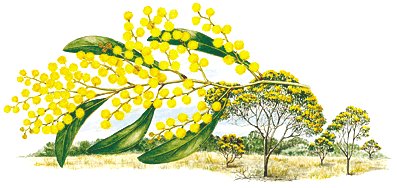
Australia is drifting very slowly each year northwards towards the Tropics. The Top End (Northern Territory, parts of Queensland) is right in the middle of this monsoonal rains and these are the most powerful weather systems on earth. It creates the wet season and turns rivers into raging rivers that eventually create the wetlands which then attracts the animals and for a short while the breeding season starts till the water evaporates and the animals then must move on urgently to find water elsewhere. One half of Australia is pure desert and looks like a scene on Mars till you come across bright white scenery that looks like snow but is in actual fact salt. We move our eyes now back to the coast and see another fascinating phenomenon the Great Barrier Reef. This was created 10,000 years ago when Australia was flooded. The sea levels rose dramatically after the ice age and this helped to create this live reef with the most complex coral that's not found anywhere else in the world. It contains 2,000 species of fish and 400 speciem's of coral that stretches for 2,000 kilometres with thousands of tiny islands sprinkled in to add more to this unusual reef. Please if you do have the honour of visiting this spectacular place then do not touch or take any of the coral for a souvenir. Coral sitting on the bottom of the ocean by itself is alive and grows very slowly into a new colony. At same time do not break any of this coral off as you will be fined (not sure what the fine is these days but I do know it's a hefty one) as the Barrier Reef is a protected area of Australia.
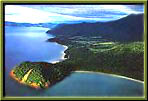
Australia is one of the oldest lands in the world the corrosion of 250 million years have turned it into a flat stable land mass. The highest peak is Mt Kosciusko in NSW, which rises 2228 metres above sea level.

The Coat of Arms was granted by King George V in 1912. It's main feature the badge contains all the states and territory's of Australia which symbolises federation. Everything else on this "coat" is recognised as a symbol of Australian fauna and flora.

On the 5th August 1850 an Act for the uniting of the Government of Her Majesty's Australian Colonies was presented to the colonies of NSW, Victoria, Van Die-mans Land, South Australia and Western Australia. All of the States eventually joined together forming the Commonwealth of Australia on the 1st January 1901, thus eliminating customs duty on trade of goods between the states. Uniting us as one nation. However, it was Governor Lachlan Macquarie who first gave official vice-regal approval to the name Australia on 21st December 1817, in his correspondence to under Secretary Goulburn in England. He wanted to encourage everyone to be proud of their new country.

The origin and use of the name "Australia", which many people take for granted, originated back in 1606, Pedro Fernandez de Quiros discovered the New Hebrides (now Vanuatu) and believing that the island on which he landed was part of the great southern continent, named it "Australia del Espiritu Santo", in honour of Phillip III of Spain, who was a prince of the House of Austria. The name meaning "South Land of the Holy Spirit". The official use of "Australia" wasn't until 1829, the then British Government first started to use the new title "Australia". Lachlan Macquarie was very aware of Mathew Flinders preference to naming this place Australia so much so he popularised the name by using it in communication back to England. He detested the name it had, at the time being "New Holland" as this name did not do justice to this great southern land. With Macquarie's and Flinders influence and William Westgarth (1861) (*wonders* is he a relative of mine?) New Holland died and the birth of a new nation called Australia was born!
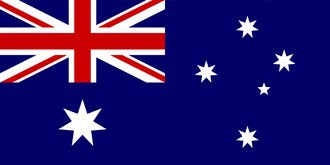
The flag came into existence following a design competition, were from 32,823 entries only 1 could be the winner. The flag flew for the first time in Melbourne on the 3rd September 1901. The small cluster of stars symbolises the Federation of all the states and territories and the large star states our geographical position the "southern hemisphere".

One of the most recognised sports player of Australia (for that matter in any world sport) would have to be without a doubt Don Bradman. (1908-2001) He is still regarded as one of the best cricketer's thanks to his years of playing internationally and locally during the years 1928 - 1948. And to date he is the only Australian knighted for services to this game of cricket. One of his favourite past times when a youngster was to hit a golf ball against a tank stand with a cricket stump. In one of his very early matches he scored 300 not surprising that the New South Wales Selectors snapped him up. England invented a very nasty thing to cricket called "bodyline" - the bowlers aimed deliberately at the bats-men body. Quite a few were hurt badly from this act of malicious play with the nasty intent to win a game of cricket at any cost. There was a "bloody cry of outrage" that England could hear without having to turn on their radios, as the Australians at the time were so outraged at this most un-sportsmen like behaviour, ever to be seen in any sport never mind the gentleman's game called cricket, that they could be heard "miles across the seas". Why did they do this you may wonder? It is because of a young man with the name "Donald Bradman" that had fantastic eye co-ordination and agility of the body and could run up a score so fast that this phenomenon has yet to be seen in any other sports-person today. He is still today one of the best sportsmen ever and right to the end remained a gentlemen with a great sense of Aussie humour. His batting average throughout his career was 99.94 and sadly he is no longer with us as he died of pneumonia at his home in Adelaide on 25 February 2001. In his last few years Don was impressed with a new Indian player by the name of Sachin Tendulkar, who he said reminded him most of himself in terms of batting style.
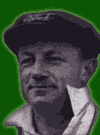
The Rules of Cricket!
(as Explained to a foreign visitor)
You have two sides, one out in the field and one in.
Each man that's in the side that's in, goes out, and when he's out,
he comes in and the next man goes in until he's out.
When they are all out the side that's out comes in and the side that's
been in goes out and tries to get those coming in out.
Sometimes you get men still in and not out.
When both sides have been in and out including the not-outs, that's
the end of the game.

Vegemite another Aussie icon is about to be replaced *raises hands in an Aussie salute* by another product! We hope this new product or another similar new invention about to hit the Aussie shelves, will down the years beat or nears Vegemites legend. Having said that, as it was a very sad day when Australia allowed this to be sold overseas, I return to this icons legend. Vegemite originated round 1922 when the Fred Walker company hired a young chemist to produce a natural spread (black) rich in vitamin B - brewers yeast. You really shouldn't knock this product as it is extremely good for you, like liver, red meat, calcium based foods, etc. Many a food item that's very good for you needs us to acquire a taste for them and that only comes with practice. This product helps women who are pregnant, have witnessed first hand that it helps with morning sickness, helps growing bones and probably old bones that no longer work so good.. Vegetarians can have this product as it contains no meat substances. Troops when overseas always take handy little packets with them so as they don't feel quite so homesick. (and plenty of replacements are always added in the cargoes going to these war zones) All this is thanks to a leading food technologist Dr. Cyril P Callister and Fred Walker's persistence in trying to arouse the Aussie public to try it. This last nearly failed and it wasn't till he came up with the idea of giving it away for free with another Fred Walker product that its success was born. Vegemite's name originated when a competition was instigated and with the winning prize of fifty pounds. To this day we have no clues as to who this person was as all relevant information has been lost. The problem with selling vegemite from when it was first created it was having to battle against my own country's product Marmite (England) - *yeah* At times it's hard for me to pick which one off the shelf.
Vegemite today is owned by Kraft Foods Limited.

